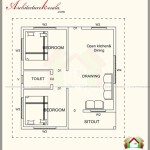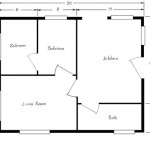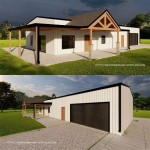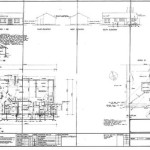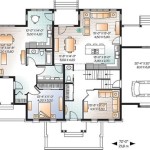How to Make House Plans
Creating house plans is an essential step in the home building process. It is a visual representation of your dream home, guiding construction and ensuring that your vision comes to life. While hiring an architect is an option, many individuals choose to take on the task themselves, armed with various tools and resources. This article will guide you through the steps of making house plans, offering practical advice and considerations for a successful outcome.
1. Define Your Needs and Budget
Before diving into plan creation, it is crucial to establish a clear understanding of your requirements and budgetary limitations. Consider the following:
- Number of bedrooms and bathrooms: Determine the size of your family and their needs.
- Living space: Think about the desired layout and include specific rooms like a study, entertainment area, or a home office.
- Outdoor space: Plan for a patio, porch, garden, or any other outdoor features you desire.
- Style and aesthetic: Decide on the overall design theme, whether modern, traditional, or rustic, and research architectural elements that resonate with you.
- Accessibility needs: If required, incorporate features for accessibility, such as ramps, wider doorways, and grab bars.
- Budget: Set a realistic budget that includes construction costs, materials, permits, and any potential contingencies.
By carefully considering these factors, you can define a clear scope for your house plans, ensuring they align with your vision and financial constraints.
2. Gather Inspiration and Research
To develop a solid foundation for your house plans, gathering inspiration and conducting thorough research is essential. Explore a wide range of sources to find ideas that resonate with you.
- Browse architectural magazines and websites: Websites such as Houzz, Pinterest, and online architectural publications offer a vast library of house plans, showcasing distinct styles and layouts.
- Visit model homes and open houses: Experiencing homes in person allows you to visualize their layout and understand how different elements interact.
- Consult with friends and family: Seek input from those who have recently built homes or remodeled. They can share insights and potentially introduce you to contractors or designers.
- Explore local architectural styles: Consider the local climate, building codes, and architectural heritage to ensure your home blends seamlessly with its surroundings.
Engaging in these activities will expose you to diverse design concepts, enabling you to refine your preferences and create a plan that reflects your unique style.
3. Utilize Design Software and Tools
Creating detailed house plans requires specialized software and tools. Various options cater to different skill levels and budgets:
- Free online tools: Many websites offer simple house plan generators that allow you to create basic layouts using drag-and-drop functionality.
- Affordable software: Programs like SmartDraw and RoomSketcher provide more sophisticated features, allowing you to create detailed floor plans and elevations.
- Professional CAD software: Programs such as AutoCAD and Revit are widely used in the architectural industry and offer advanced capabilities for intricate design and documentation.
Choosing the right software depends on your level of expertise and the complexity of your project. Consider factors such as ease of use, features, and your budget when making a decision.
4. Develop Floor Plans
With your software chosen, you are ready to dive into the heart of house plan creation – the floor plans. Here are key considerations:
- Layout: Determine the arrangement of rooms, ensuring a logical flow and efficient use of space.
- Dimensions: Precisely measure each room and hallway, ensuring accuracy in your plans.
- Doors and windows: Position doors and windows strategically for natural light, ventilation, and ease of movement.
- Traffic flow: Consider the movement of people within the house and avoid bottlenecks or awkward transitions.
- Stairwells: If your home has multiple floors, ensure adequate space for comfortable stairwells and landings.
- Storage: Plan for built-in storage solutions to maximize space and organization.
Creating well-designed floor plans is crucial for a functional and visually appealing home. Multiple iterations may be required to achieve the desired layout.
5. Create Elevations and Perspectives
While floor plans provide a top-down view of your house, elevations and perspectives offer a more comprehensive understanding of the exterior and interior spaces. These views are important for visualizing the overall design and ensuring consistency.
- Elevations: Create front, back, and side views of your house, showcasing the exterior design and features, such as windows, doors, and rooflines.
- Perspectives: Generate three-dimensional views of key rooms and areas of interest, allowing you to experience the space from different angles.
- Details: Incorporate details like trim, siding, and roofing materials to create a complete visual representation of your home.
Elevations and perspectives will help you visualize your home's exterior and interior spaces, ensuring that all elements harmonize and create a cohesive design.
6. Consider Energy Efficiency and Sustainability
Incorporating energy-efficient features and sustainable practices into your house plans can lead to long-term benefits, reducing energy consumption and minimizing environmental impact.
- Orientation: Position your home to maximize passive solar heating and minimize energy loss.
- Insulation: Use high-quality insulation materials in walls, ceilings, and floors to retain heat in winter and keep your home cool in summer.
- Windows: Select energy-efficient windows with low-E coatings and argon gas fill to reduce heat loss and gain.
- Lighting: Utilize LED bulbs for energy-efficient lighting solutions.
- Water conservation: Install low-flow showerheads, toilets, and faucets to conserve water usage.
- Renewable energy sources: Explore solar panels, wind turbines, or geothermal systems to harness renewable energy resources.
By integrating these considerations into your house plans, you can create a home that is environmentally responsible and cost-effective to operate.
7. Consult with Professionals
While creating house plans yourself can be a rewarding experience, there are instances where seeking professional guidance is highly recommended.
- Structural engineer: For complex designs, consult with a structural engineer to ensure the structural integrity of your home.
- HVAC specialist: Incorporate HVAC system design into your plans for optimal heating and cooling efficiency.
- Electrician: Plan for electrical wiring, including outlets, switches, and fixtures to meet safety standards and functional needs.
- Plumber: Design plumbing layouts for water supply, drainage, and waste disposal systems.
Consulting with professionals can ensure that your house plans adhere to building codes, incorporate safety measures, and maximize functionality.
8. Finalize Your Plans
Once you are satisfied with your house plans, finalize them by creating detailed drawings and specifications.
- Drawings: Prepare a set of construction drawings that include all necessary details, such as floor plans, elevations, sections, and details.
- Specifications: Document the materials, finishes, and construction methods to be used in your home.
- Review: Carefully review your plans for accuracy, completeness, and consistency before submitting them for building permits.
Creating comprehensive and accurate house plans is essential for a smooth and successful construction process.

Floor Plan Creator And Designer Free Easy App

How To Draw A Floor Plan Live Home 3d

Easy To Build Houses And Floor Plans Houseplans Blog Com

Make Your Own Blueprint How To Draw Floor Plans

Make Your Own Blueprint How To Draw Floor Plans Drawing House Sketch Plan

House Plans How To Design Your Home Plan

Blender For Noobs 10 How To Create A Simple Floorplan In

How To Make A House Plan Edrawmax

Small House Design 2024001 Pinoy Eplans Floor Plans

Create Floor Plan


